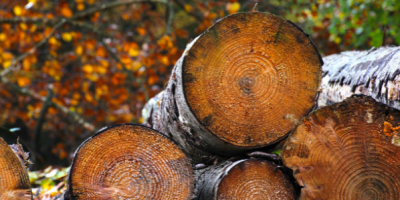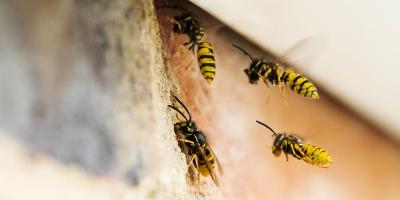Termites in the Yard: When to Get the Pros Involved

While most people know that termites are homeowners’ worst entomological enemies when they’re inside your home, many still might wonder -- what about out in nature, where bugs generally belong? After all, termites can be a beneficial part of a healthy ecosystem by helping dead plant matter decompose, thus freeing its nutrients to be used again.
So, what should you do if you find termites in or near your own yard? Well, you’ve come to the right place because the answer is… it’s complicated. Whether you should call a pest control professional immediately or if it’s okay to leave them alone depends on a number of factors.
Get to Know the Tireless Termite
Before you can decide what to do about outdoor termites, the first thing you need to do is be able to identify them. New England termites are all of a species called subterranean termites, and there are three different kinds: Reproductives, workers and soldiers.
Queens are the biggest of the bunch (kings are much smaller). Originally born as “alates” and capable of swarming, these royals-to-be have long, dark brown bodies of about ¼ to ½ inch long with milky-colored wings. Eventually, after they’ve swarmed, mated and successfully established a colony, they can finally shed their wings and settle in with their new crowns and royal titles.
Workers and soldiers, however, are wingless. Workers have cream colored bodies with small jaws that help them gnaw through wood. Soldiers, on the other hand, have large mandibles and flat, wide bodies. Termites eat cellulose which is a component of wood, grass and leaves. They especially prefer wood that has started to decay.
Starting in the spring, winged alates begin to appear in swarms. Once a male and female choose each other, they’ll lose their wings and burrow underground. If they’re successful in their endeavor to reproduce and find a comfy home in time, they’ll be able to start and expand their colonies. If left to spread unchecked, the colonies can end up taking up multiple nesting sites connected by underground tunnels.
Enemies or Neighbors? How to Decide
If you come across one of these subterranean termite colonies in or near your own yard, the most important factor determining whether you should consider them friend or foe is how far away they are located in relation to your home.
That’s because, as destructive as they are, termites aren’t very good fliers. When they swarm to make new colonies, they’re not likely to travel very far.
If you find them within just a few paces of your home, however, there’s a good chance the colony has already tunneled over to your house and is making a meal of its wooden structure. If not, you’ll still need to act fast, because they will be encroaching soon.
But if you have a large lawn, a newer house (especially one made of brick), and the termites are a football field or more away, the risk is very minimal.
Leave it up to the Pros
If you suspect termites might have infiltrated your home (or even if you don’t), there are five telltale signs to look for:
- Swarmers (those new kings and queens) or their discarded wings.
- Mud tubes (which they use to get to and from their colony).
- Wood damage -- especially wood eaten from the inside out.
- Uneven or bubbling paint -- if it’s not termites, it could be water damage.
Whether you merely suspect termites or you have definitive proof, the best prevention strategy is to have a pest control professional on the case. We perform a thorough termite inspection during every service to ensure our customers are fully aware of any and all threats, whether immediate or in the future. That way we can nip any pest issues in the bud before they become a bigger, more costly problem.
Whether you know you have termites or just want to make sure your home stays off their menu, we’re here to help. Give us a call today to schedule an inspection.



